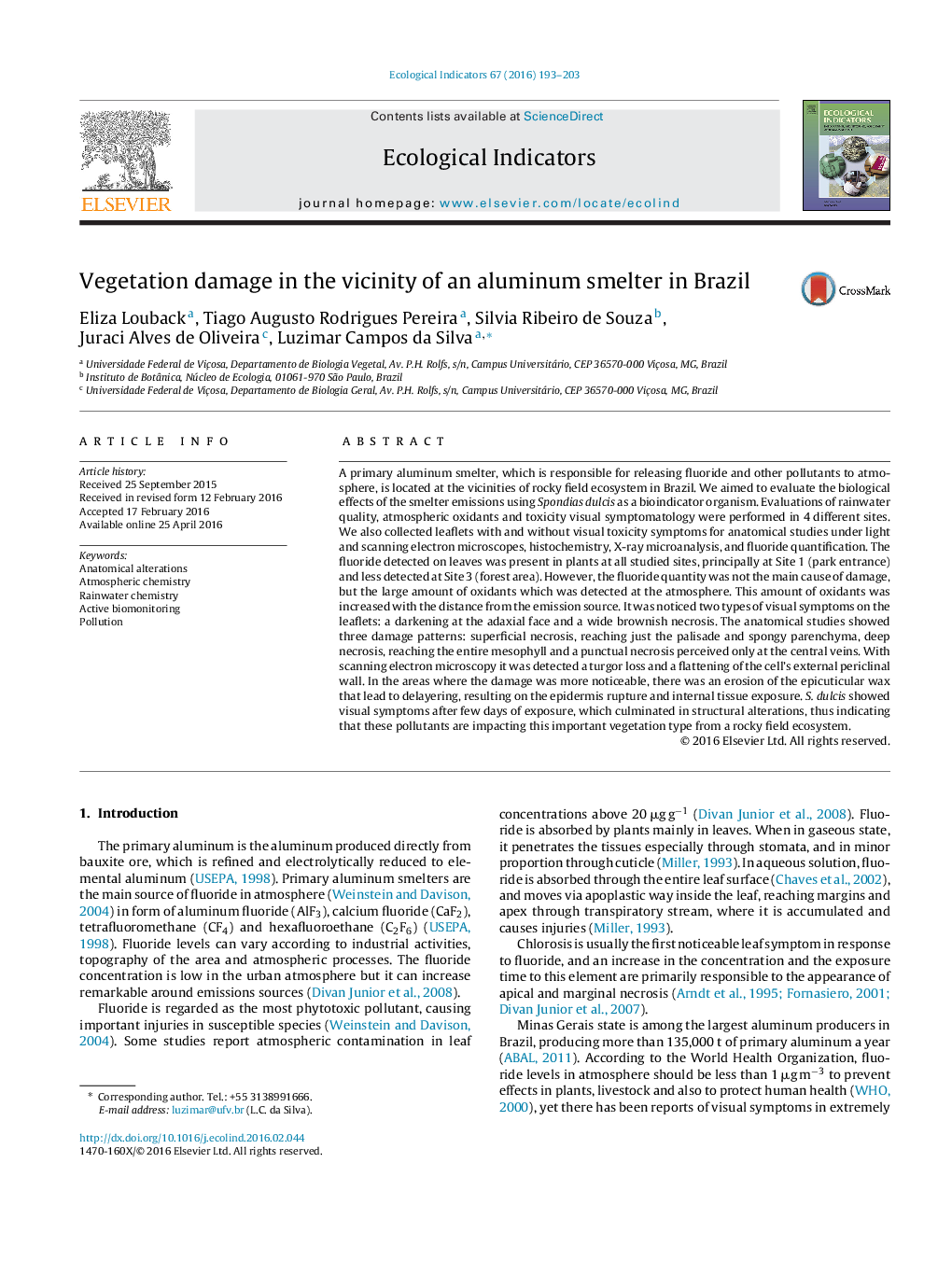| Article ID | Journal | Published Year | Pages | File Type |
|---|---|---|---|---|
| 4372867 | Ecological Indicators | 2016 | 11 Pages |
•Biological effects of smelter emissions were evaluated in a conservation area.•Evaluations of rainwater quality, atmospheric oxidants and visual symptomatology.•Fluoride and large amount of oxidants were detected at the park atmosphere.•Visual symptoms and fluoride accumulation in leaf tissues after few days of exposure.
A primary aluminum smelter, which is responsible for releasing fluoride and other pollutants to atmosphere, is located at the vicinities of rocky field ecosystem in Brazil. We aimed to evaluate the biological effects of the smelter emissions using Spondias dulcis as a bioindicator organism. Evaluations of rainwater quality, atmospheric oxidants and toxicity visual symptomatology were performed in 4 different sites. We also collected leaflets with and without visual toxicity symptoms for anatomical studies under light and scanning electron microscopes, histochemistry, X-ray microanalysis, and fluoride quantification. The fluoride detected on leaves was present in plants at all studied sites, principally at Site 1 (park entrance) and less detected at Site 3 (forest area). However, the fluoride quantity was not the main cause of damage, but the large amount of oxidants which was detected at the atmosphere. This amount of oxidants was increased with the distance from the emission source. It was noticed two types of visual symptoms on the leaflets: a darkening at the adaxial face and a wide brownish necrosis. The anatomical studies showed three damage patterns: superficial necrosis, reaching just the palisade and spongy parenchyma, deep necrosis, reaching the entire mesophyll and a punctual necrosis perceived only at the central veins. With scanning electron microscopy it was detected a turgor loss and a flattening of the cell's external periclinal wall. In the areas where the damage was more noticeable, there was an erosion of the epicuticular wax that lead to delayering, resulting on the epidermis rupture and internal tissue exposure. S. dulcis showed visual symptoms after few days of exposure, which culminated in structural alterations, thus indicating that these pollutants are impacting this important vegetation type from a rocky field ecosystem.
